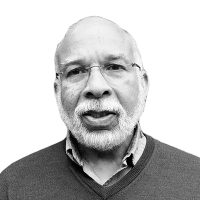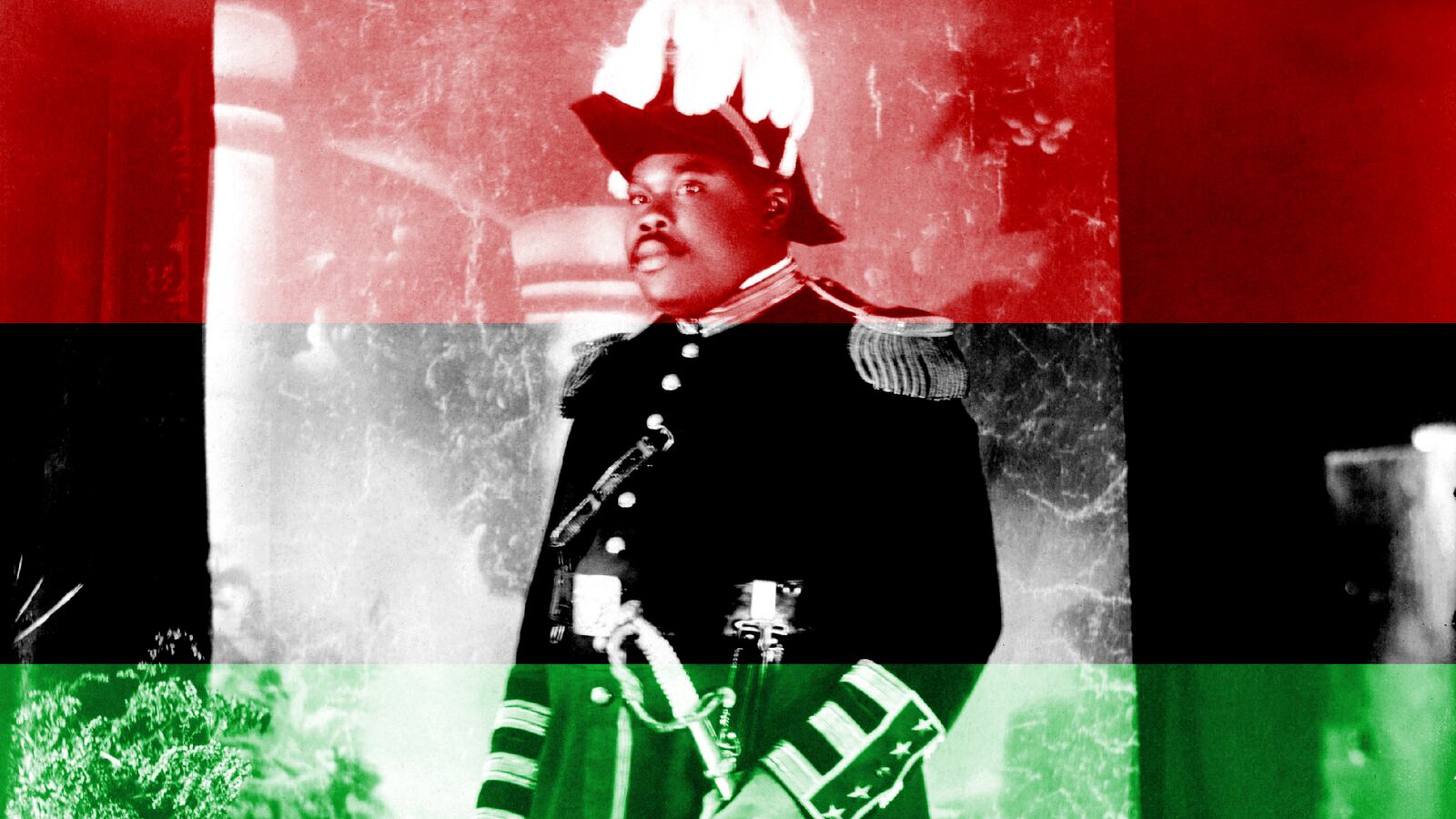In the seconds before his death, Micah Johnson wrote the letter R and then the letter B in his own blood on the wall. It took investigators a bit of time to suss that out, but it seems obvious something other than empty hatred had seeped into his brain. The red, black and green flag has been, for almost a century now, a symbol of pride among politically aware black people in America and around the world.
Johnson’s meaning must be seen in the context of a movement begun by a man named Marcus Garvey, at a gathering at Madison Square Garden in New York City in 1920.
Garvey started an organization of blacks that included large numbers of the first Caribbean immigrants in the early twentieth century. It was called the Universal Negro Improvement Association, and the men in the U.N.I.A. were respected by thousands of blacks in America of the early 1900s. Those blacks were seeking emotional relief from the shootings and rampages of white racists in the American South, as well as those in places like Tulsa, Oklahoma, where in 1921 whites launched a pogrom in which scores of blacks were killed, many more were wounded and a thousand of them lost homes and businesses.
The so-called Garveyites would march along the streets of Harlem and other locales in America in their regal uniforms, as soldiers of a nation without boundaries. The weapons they displayed typically were no more than swords. Anything more in those days would have invited a massacre recalling the repression of the slave revolts. Remember that 1920 was just five years after the President of the United States hosted a White House showing of “The Birth of a Nation,” the film that glorified the founding of the Ku Klux Klan.
Let’s acknowledge something that’s difficult to say about Micah Johnson in this moment: There are large numbers of blacks, especially young men, in America who have, deep in their hearts, an understanding of the anger that led Johnson to the psychotic explosion last week in Dallas, where he unloaded bullet after bullet at innocent white men who, in their blue uniforms, were symbols of oppression to Johnson and so many young blacks in America. Five of those white men became martyrs to all believing in the maintenance of law in these United States. This is true even as Johnson sought to become a martyr himself – a martyr to the ideals of those who, in 1920, in Madison Square Garden of New York City, offered the Red, Black and Green flag for all people of African descent who lacked pride and lacked justice in the so-called Land of the Free.
Dispense for the moment with Johnson’s obvious flaws. He was thrown out of the U.S. military because he had harassed a woman who was so fearful of him that she sought protection for herself and her whole family. Be aware that Johnson’s murder spree, coming just after the police killings of black men in Minneapolis and Baton Rouge, is set in a long history of blacks in America reacting to oppression.
I ask fair-minded whites to reflect and see how some young black men might today see the United States of America as not significantly different from the America of a century ago. How is it that a white police officer, Daniel Pantaleo, could be seen on video fatally strangling a black man (whose alleged crime was selling loose cigarettes) and then appear to laugh about it afterwards (again caught on camera) – and stay on the police force to this very day, two years later? Multiply this by the daily perceptions of young black men across the country and you have the makings of a revolt, real or hoped for.
Back in the days when Marcus Garvey, who hailed from the Caribbean island of Jamaica, was waving the red, black and green flag, another black man (who disagreed with Garvey on some points) said the race crisis would define the rest of the century. That man was the noted scholar W. E. B. Du Bois and his precise words were, “The problem of the twentieth century is the problem of the color-line.” By the 1990s, those with seeing eyes were saying that the crisis would last beyond the twentieth century and take us into the new millennium.
What’s so startling to many black people who have steeped themselves in black American history is how little has changed from the days of Marcus Garvey. One huge difference, of course, is the sheer number of guns out there, and not only handguns, but the type that fire automatically and were once thought appropriate only for declared warfare. But otherwise so much of what is transpiring is a reminder that things remain so recognizable even as they change.
One thing for certain is that black militant groups will be more under the microscope now than they have been for a long time. Since the revelations about Johnson’s red, black and green scribblings, the Anti-Defamation League Center on Extremism has been unloading details about the African American Defense League and the New Black Panther Party. And the United States government will surely be putting energy into determining if more Johnson-type threats are in the background somewhere in the nation, ready to surface.
And in that expectation of deep surveillance, there exists another link between this Micah Johnson era and that of Marcus Garvey. The modern surveillance of black organizations began with the U.S. government sending spies to Garvey meetings. The developing federal investigative bureau wanted to find out what Garvey and his people were really up to. In fact, the U.N.I.A. was trying to start businesses and open its own churches, fashioned on the Anglican churches of the Caribbean.
Garvey was eventually jailed by the federal government for fraud having to do with the U.N.I.A.’s Black Star Line shipping business. He was imprisoned and then repatriated to Jamaica. But his legacy lived on in the minds and lifestyles of many black Americans. My grandfather, Bertram L. Baker, was for a time in the 1920s a follower of Garvey. But he moved on. In 1948 granddad was elected to the New York State Assembly, becoming the first black elected official in Brooklyn. His experience says that Garvey’s people were not terrorists or even revolutionaries, but men and women trying to assert themselves with a measure of pride in an environment they found repressive and racist.
Surely there were some Garveyites who, if they could have, would have taken up arms against the powers that were. The Black Panthers wanted to, but were mostly suppressed through government infiltration. And today the anger that has long defined black America still exists.
Today there will be some who see in Micah Johnson, despite his craziness and failure to see the self-destructiveness in what he was doing, a boldness and genius that belies the insanity of his reported ramblings. The secrecy with which he seems to have planned his attack, the worst on law enforcement officials since 9/11, bespeaks an intensity that suggests he knew there were eyes casting about, as they had cast about on the Garveyites.
But whatever peace Johnson may have found will not dissolve the color-line crisis that crossed over from the twentieth century into this one, and that from all appearances will be with us into at least the near future.






